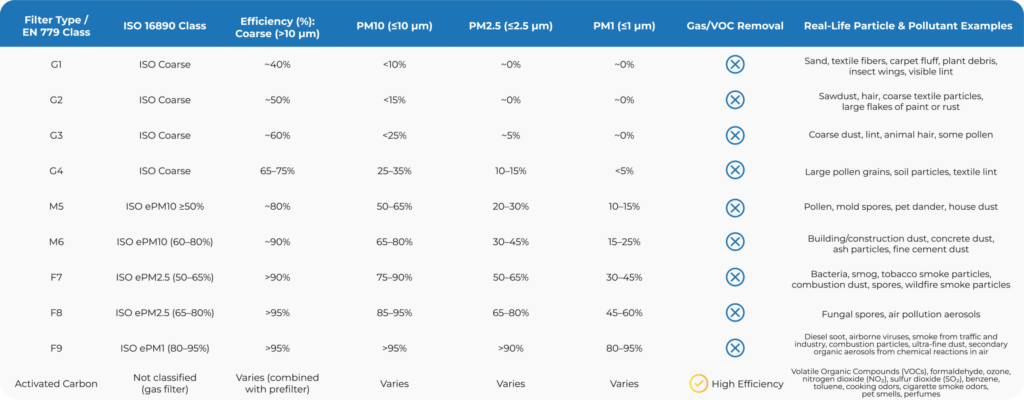Last updated: December 1, 2025
Why Choosing the Right Filter Matters
After making the excellent decision to entrust the air cleanliness of your home or workplace to an MVHR (Mechanical Ventilation with Heat Recovery) system, you likely discovered that simply installing the unit isn’t enough. To ensure that the air in your space remains as clean and healthy as possible, it’s essential to regularly replace the filters in your ventilation unit.
Fortunately, the filter replacement process is simple and requires no special tools or technical skills. However, choosing the right filter can feel overwhelming without the right information.
What Filter Does My MVHR System Use?
When looking for a replacement filter, the first thing to check is the manufacturer and model of your MVHR unit. Different systems use different sizes and types of filters. It’s also important to understand that an MVHR system filters both:
- Incoming (supply) air from outside
- Outgoing (exhaust) air from inside your home or building
Because outside air tends to contain more harmful pollutants, it typically requires higher-class filters to capture smaller and more dangerous particles (like smoke or soot). In contrast, indoor exhaust air is often less polluted but still needs to be filtered to protect the internal components of your system from dust and buildup.
What Does MVHR Filter Class Indicate?
To choose the correct filter, check whether it complies with international filtration standards. You’ll often find this information printed directly on the filter or listed in its product specifications.
- Before 2016: Filters were classified using the EN 779 standard.
- After 2016: Filters follow the ISO 16890 standard.
Key Differences Between EN 779 and ISO 16890:
| EN 779 | ISO 16890 |
|---|---|
| Measured a single particle size (~0.4 µm) | Measures three size ranges (PM10, PM2.5, PM1) |
| Filter classes: G1–G4, M5–M6, F7–F9 | Classes: ISO Coarse, ISO ePM10, ePM2.5, ePM1 |
| Less reflective of real-world conditions | More accurate and health-relevant |
Filter Classifications Based on Particle Size
Under ISO 16890, filters are evaluated based on how efficiently they capture particulate matter (PM) in three critical size ranges:
- PM10 (≤10 µm) – e.g., pollen, mold spores, dust mites
- PM2.5 (≤2.5 µm) – e.g., bacteria, smog, fine dust
- PM1 (≤1 µm) – e.g., combustion particles, viruses, smoke
Each filter class is labeled based on the minimum 50% removal efficiency for that particle size category (e.g., ePM1 ≥80%).
For detailed comparison and reference, see the complete classification table below:

PM1 particles are the most dangerous to health, as they can penetrate deeply into lungs and even enter the bloodstream.
When Should You Choose Activated Carbon Filter
While the filters above deal with particulates, some harmful pollutants exist as gases — including ozone, nitrogen dioxide (NO₂), VOCs (e.g., formaldehyde), and cooking or cigarette odors. These cannot be captured by standard particle filters.
That’s where Activated Carbon Filters come in:
- Made of porous carbon material that adsorbs gases and odors
- Often used in combination with F7–F9 particle filters
- Ideal for kitchens, urban homes, workshops, or smoke-prone areas
Still Not Sure Which Filter You Need?
If you’re still unsure about the right filter class for your MVHR system, don’t worry. Just contact us via the details provided, and we’ll be happy to help you:
- Choose the right filter class
- Understand differences in particle and gas filtration
- Get the best air quality for your space


